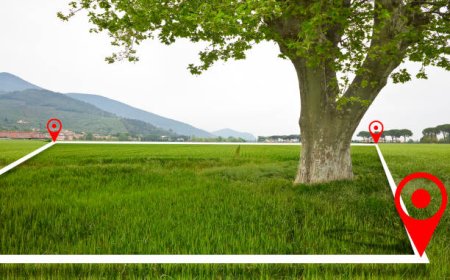How to Stay Energized During the Monumental Ghorepani Trek
Stay energized on the Ghorepani trek with smart tips on food, hydration, pace, sleep, and mindset to help you reach Poon Hill strong and enjoy every step.

How to Stay Energized During the Monumental Ghorepani Trek
With breathtaking vistas most notably from Poon Hill the Ghorepani trek lies in Nepal, in the Annapurna region. Best mix of scenery, culture, and physical feat you could get all in one Great trip! The Camino isnt necessarily as long as some Himalayan circuits. Those sharp ups and downs and altitude changes can sap your strength in a hurry. From jungles to hamlets to hills, you need to maintain steady energy not only to arrive at Poon Hill, but also to enjoy the journey.
A lot of trekkers begin with the trek to Ghorepani full of energy, yet do not know how much energy to reserve their energy. On account of the physical stress, the altitude, and sometimes the unpredictable weather, you have to be smart about fueling yourself, pacing yourself, and taking care of yourself in general. Without being prepared, you can carry away your exhaustion, subtracting from your experience, and potentially endangering yourself or others in the process.
Read on, and I will be elaborating on six pieces of advice that will enable you to energetically perform the Ghorepani trek. From food plan and hydration to pacing and mental stamina, these are the pointers that will help you stay centered, physically and mentally. Whether that is your first trek otherwise youre a seasoned pro, the more youre willing to welcome those magnificent moments into your heart, the greater youll cherish each 2nd of this tremendous Himalayan voyage.
Devour energy-boosting food frequently.
A healthy dietweight-reduction plan is key to powering up for the Ghorepani trek. Select excessive-carbohydrate meals, like rice, dal bhat (rice and lentils), potatoes, or noodles, which give longer-lasting power. Shorter, lighter food is probably higher quality to avoid tiredness. Snack on nuts, dried fruit, and strength bars among food. Live far from greasy, heavy ingredients that weigh you down, and purpose on greater balanced food that encompasses a minimum a chunk of protein and fat to restore muscle groups and maintain your energy levels.
Live Hydrated, especially at Altitude
In case you get dehydrated, youll experience greater fatigue and other altitude-related symptoms. Remain as well-hydrated as possible (ideally, thats at least 3 liters) every day. Take a refillable water bottle or hydration bladder with you on the trail. And obviously warm, herb-infused teas, especially as theyre served in teahouses, can be so hydrating and soothing. Don't forget electrolyte dietary supplements to replenish the salts I secreted through my skin. Do not forget, thirst isn't constantly a sensation you're aware of at high elevation, so drink water gradually during your hike.
Fitness and Health
The Ghorepani trek is quite challenging, and some of the uphills can leave you exhausted in no time. Just set a nice, slow, steady pace rather than try to make or break the climb. Get those quick, ordinary breaks to hold your sanity. Concentrate on your body and ease up if you sense lightheaded or worn out. Enjoyable isnt inefficient its getting ready to manage whats next. It additionally facilitates your body extra effortlessly to the changing altitude.
Dress in Layers to regulate your frame Temperature.
Trail temperatures can alternate, from warm, early morning valley bottoms to chilly mountain tops come night. Garb: dress in layers to permit for modifications to your clothing. Keep away from sweating; moist clothes will lose warmth, and you may lose heat swiftly. It is a great idea to layer base layers, which can be designed to shift moisture far from the body, accompanied by way of mid-layers that insulate and water-resistant outer layers. Maintain your palms, head, and feet with gloves, hats, and thermal socks. The right temperature control to save energy and feel comfortable.
Get Quality Sleep to Recharge
And remember how critical sleep is to both recovery for the muscles and sharpness for the brain on the hike: dont shortchange your rest. Elevation and clamorous teahouses contribute to disturbed sleep, so pack earplugs and an excellent sleep mask. Sleep warm in a cold-rated sleeping bag. Ensure that you sleep early and with adequate sleep, dont eat too much food or have a cup of coffee or tea just before bedtime. Great sleep charges your energy reserves so you can begin each day's walk renewed.
CHOOSE TO BE HAPPY AND RIDE IT HARD
It's far as lots about approximately mind power as muscle. It is able to be hard going, however, the beautiful surroundings, subculture, and sense of fulfillment can keep you going. This kind of journey may be made in fragments, and each fragment a cause for a birthday party. Share stories with other trekkers or meditate as you rest. It enhances mood, likewise endurance, and will create a fantastic addition to the Ghorepani trek.
How challenging is the Ghorepani Poon Hill trek?
Trekking in Ghorepani Poon Hill It is a moderate journey. There are lots of ups and downs, but its pretty short, usually 4-5 days. Its a good course for people who are in shape, though, as long as they come prepared. There are clear paths, rest places with teahouses, and marked trails.
How many steps to Ghorepani?
In steps, there are about 3,000 to 4,000 to get to Ghorepani, based on which side you choose and where you begin. It's also a very steep ascent, especially to the last push up to Ghorepani village. It can be a bit of a grunt exact count depends on the route, above and right so youll want to bring some solid stamina, as well as some pacing, to handle more than 3,000 feet vertical, in cushioned comfort.
Can you get altitude sickenss at poon hill?
You could get altitude illness at Poon Hill, that is around three,210 meters (10,531 ft)high. For the reason that the increase is gradual, there are generally slight signs; however, trekkers ought to be alert to warning symptoms of headache, dizziness, or nausea 11. Safety risks are decreased with ok acclimatization, hydration, and pacing.
Do I need a drowsing bag for the Poon Hill Trek?
A sleeping bag is an absolute must for the Poon Hill trek, given the cold seasons. Even the teahouses at night can hover around freezing. Blankets are provided in the tea houses, but a good quality sleeping bag can help keep you warm and comfortable in the teahouses, and you will sleep better and recover faster.































